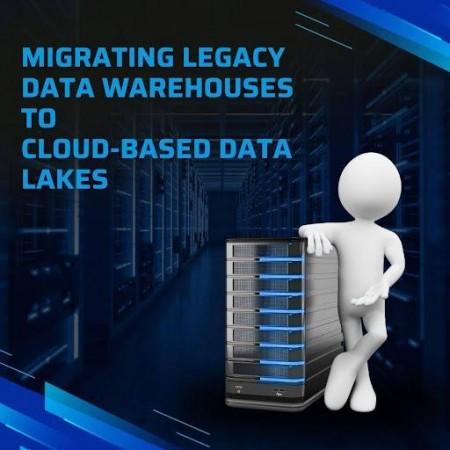
As data volumes increase at an unprecedented rate, traditional data warehouses often fall short in meeting the growing need for real-time analytics and scalable data management. Vishnu Vardhan Reddy Chilukoori, Srikanth Gangarapu, Abhishek Vajpayee, and Rathish Mohan examine the move from legacy data warehouses to cloud-based data lakes. They offer an in-depth guide on navigating this transition, addressing key challenges, outlining effective strategies, and sharing best practices for a smooth and successful migration process.
Understanding the Migration Landscape
Legacy data warehouses rely on structured models and predefined schemas, which can cause delays in data availability because of their batch-oriented ETL processes. This approach limits the ability to handle diverse and rapidly changing data types efficiently. In contrast, cloud-based data lakes provide flexible storage and processing capabilities for structured, semi-structured, and unstructured data, eliminating the need for predefined schemas. This shift allows for real-time data processing, supports advanced analytics, and offers virtually unlimited scalability, fostering a more agile and responsive data management strategy.
Migration Strategy
A successful migration strategy begins with thorough assessment and planning. Organizations must inventory their existing data assets and workflows, identify critical business processes, and define clear success criteria. A phased migration approach is recommended to minimize business disruptions. Data modeling considerations also play a crucial role in this transition. Unlike the rigid schemas of traditional warehouses, data lakes allow flexible data models, supporting schema-on-read approaches. Implementing data lake zones raw, refined, and curated helps organize data and maintain governance.
ETL Process Adaptation
The move to cloud-based data lakes necessitates significant changes to existing ETL processes. Traditional batch-oriented ETL workflows must evolve to leverage stream-processing paradigms, reducing latency and enabling more timely insights. Distributed processing frameworks like Apache Spark and Apache Flink facilitate large-scale data transformations, improving speed and scalability. Organizations must also implement data quality checks and validation at the point of ingestion to maintain data integrity within the lake, reducing downstream cleansing efforts.
Technical Implementation
Technical implementation includes efficient data ingestion, processing, and storage. Custom connectors and Change Data Capture (CDC) ensure continuous updates, while robust pipelines enable near real-time analysis. Refactoring ETL logic for distributed frameworks, optimizing joins, and using partitioning strategies enhance processing. Choosing formats like Apache Parquet ensures cost-effective storage and fast queries. Data cataloging tools aid metadata management, supporting governance and security.
Performance Optimization
Performance optimization is essential to ensure that the cloud-based data lake can handle large-scale processing and analytics workloads efficiently. Techniques like leveraging columnar storage formats, implementing data skipping and pruning, and using caching mechanisms can significantly enhance query performance. Resource management is equally important, with strategies like auto-scaling compute resources and optimizing cluster configurations to ensure efficient resource allocation. Monitoring resource usage and tuning performance helps maintain the balance between performance and cost-effectiveness.
Challenges and Solutions
The migration process is fraught with challenges, including data consistency, skills gaps, and performance tuning. Ensuring data consistency across legacy and new systems requires robust validation and reconciliation processes. Addressing the skills gap involves training existing staff and potentially partnering with experienced vendors to bridge knowledge gaps. Performance tuning remains a critical concern, requiring iterative optimization and leveraging cloud-native services to achieve desired performance levels.
The shift from legacy data warehouses to cloud-based data lakes offers organizations enhanced scalability, flexibility, and cost-effectiveness. Although this migration presents numerous challenges, a structured approach encompassing assessment, implementation, and optimization can facilitate a successful transition. The collaborative work of Vishnu Vardhan Reddy Chilukoori and his co-authors highlights that with a strategic plan and continuous optimization, organizations can overcome complexities and realize significant improvements in processing speed, cost reduction, and analytics capabilities. Embracing cloud-based data lakes positions organizations to remain competitive and data-driven in an era of exponential data growth.















